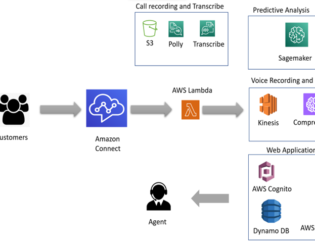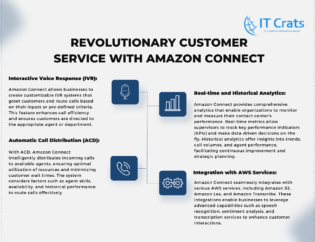The present IT industry is showing a drastic change over the past decade in every zone. Organizations valued on-premise infrastructure as the best option for their business and believed that the on-premise solutions provide greater security, visibility and control. Nowadays, most companies are moving towards off-premise possibilities such as cloud and colocation.
According to a report by Synergy, most major cloud providers have released their earnings data for Q1, estimating that quarterly cloud infrastructure service revenues (including IaaS, PaaS, and hosted private cloud services) reached $63.7 billion, with trailing twelve-month revenues amounting to $237 billion.

The cloud market continues to expand at a rapid pace in all regions of the world. North America, APAC, and EMEA regions showed growth rates of well over 20% year over year when measured in local currencies. This global growth trend emphasizes the importance of cloud infrastructure services for businesses of all sizes and industries. On the other hand, despite cloud computing being the buzzword for over a decade, 98% of the companies are nowhere near abandoning their on-premise servers in favor of the cloud. So, what is it that’s creating such a massive divide in the IT world when it comes to choosing an IT infrastructure model?
If cloud computing offers lower costs, scalability, and accessibility, on-premise solutions provide greater security, visibility, and control. Inevitably, making the right choice for your company can be tricky. It requires a deep understanding of the pros and cons of both — cloud and on-premises — models, your business needs, and what you’re trying to achieve.
But before you take the leap and make a choice, let’s first take a look at the basics
On-premise Environment
In a traditional on-premise environment, businesses completely own their hardware infrastructure that resides within the company’s premises. The company is fully responsible for acquiring, maintaining, and upgrading the servers and infrastructure. Companies need to purchase licenses for on-premise software and assume responsibility for all configurations, software updates, and patches.
Essentially, on-premise solutions require companies to invest in a dedicated space for the data center and a full-fledged, in-house IT team for deployment, life-cycle management, and support.
Cloud-based Environment
In a cloud-based environment, resources, and services — like compute, storage, networking, and security — are delivered by a third-party vendor over the internet. The required hardware infrastructure is located off-site, and the provider is responsible for everything from hardware provisioning to upkeep. In most instances, companies can use applications and software hosted on the cloud through a subscription model.
Companies do not need to invest upfront in an on-prem data center, and the cloud-provider assumes much of the responsibilities of the in-house IT department. However, companies can choose between a private cloud deployment in which the infrastructure can be located on-site or offsite but is used by a single organization and a public cloud where infrastructure resides off-site and supports a multi-tenant architecture. They can also opt for a mixture of both — a hybrid cloud.
There are three basic cloud service models based on what they offer a business:
- IaaS (Infrastructure-as-a-Service)
- PaaS (Platform-as-a-Service)
- SaaS (Software-as-a-Service)

On-Premise vs. Cloud Comparison
There is no clear winner between on-premise vs. cloud computing solutions that cover all business purposes.
Both on-site and Cloud deal with performance, cost, security, compliance, backups, and disaster recovery differently.
Where The Cloud Clearly Wins
The cloud has many potential advantages over on-premise solutions:
Total Cost of Ownership:
The greatest benefit that companies, especially SMBs, experience when opting for cloud services is monumental savings on TCO. Instead of acquiring expensive hardware and setting up a data center from scratch, companies can partner with a third-party cloud vendor who can take over data storage and resource provisioning at a fraction of the cost. With the cloud, companies can shift IT from CapEx to OpEx, significantly reducing the upfront costs that may be too expensive for SMBs to begin with.
Flexibility:
Public cloud platforms mainly differ from on-premise solutions in that they offer greater flexibility. Leading cloud service providers can offer multiple service packages and pay-as-you-go pricing to suit a wide array of organizational needs. With the cloud, companies only pay for the servers, storage, compute, and networking resources that they’re actually consuming. This flexibility can come in handy for SMBs that do not have enough resources to go all-in on dedicated network and hardware infrastructure, especially since most of the resources will be underutilized anyway.
Scalability:
Unlike on-site data centers, scaling in the cloud does not require buying and deploying physical servers that will also need to be maintained on an on-going basis. With cloud-based virtualized infrastructure, IT administrators can provision and deprovision resources with as little as a few clicks. This flexibility in scaling infrastructure capabilities up and down, as needed is of essence for businesses that experience occasional demand hikes or frequent, unpredictable fluctuations in resource consumption.
Maintenance:
Public cloud infrastructure is fully managed by the third-party SaaS, IaaS, or PaaS provider for a fixed or per-use fee. Depending on the cloud service model, cloud providers can relieve in-house IT teams of purchasing, deploying, and managing upgrades and patches for cloud-based applications and server hardware. In addition to a smaller hardware footprint, the cloud also enables SMBs to bolster with minimal, on-site technical expertise. They can focus on their core business operations and the provider will be responsible for storing and managing their data and infrastructure.
Data Backups and Disaster Recovery:
Renowned cloud service providers typically have extensive data backup and disaster recovery protocols in place. With the cloud, the infrastructure is located off-site, and the data is distributed and replicated across geographically distributed data centers. So, if a local machine malfunctions or a natural calamity hits a certain area, companies can rest assured that they will be able to retrieve the lost data. With on-premise deployments, backing up data to a remote data center gets very expensive and complicated.
When On-Premise is The Winner
Despite the inherent flexibility and the many benefits of the cloud, there are still plenty of reasons why companies continue to upgrade and invest in on-premise data centers or private clouds. Here’s an overview of those:
Visibility and Control:
Many organizations are still hesitant to hand over their data and infrastructure to an external provider, regardless of how reliable they are. With on-premise application hosting and infrastructure deployment, organizations can assume full control of their data and technology stack. They can control their software and hardware implementations, freely choose the servers and other hardware components, and physically access the hardware when required.
Conversely, the cloud delivers virtualized infrastructure-as-a-service and organizations cannot access the underlying hardware. So if a problem were to occur, the organizations will be relying completely on the cloud vendor to solve it at their discretion.
Data Security :
Cloud service providers usually follow strict security protocols and have access to sophisticated security technologies. But the data will still be stored on the vendors’ servers and unless the provider offers zero-knowledge encryption it can be accessed by them. Just as we witnessed the massive cybersecurity attack on SolarWinds spread to its high-profile clients like Microsoft and NSA, an attack on cloud vendor’s data centers can jeopardize the client organizations as well. Although IaaS providers can offer data encryption at rest and in transit, the threat becomes pressing as providers assume further control over applications and data and when companies, especially those with smaller budgets, partner with cheaper, less reliable cloud service providers.
Compliance:
Industries facing stringent requirements for compliance with regulations – like HIPAA in the healthcare sector – have to keep an eye on where their data is stored. On-premise deployments can simplify data locality and governance since the data remains within the organization’s premises. Although key players in the cloud market are striving to meet all regulatory standards, some companies simply can’t rely on the multitenant cloud architectures because of regulatory compliance or customers’ data privacy concerns.
Performance:
With a well-maintained, on-site IT infrastructure, companies don’t have to deal with issues like slow internet connection or high latency. On-premise deployments, by virtue of being closer to the employees or end-users, can give better performance as compared to cloud infrastructure with its remote servers and shared resources. With the cloud, a fast and reliable internet connection is essential for a good user experience and employee productivity. So, on-premise is ideal for high-performance workloads that require high storage performance and low latency. For instance, a design firm dealing with intensive graphics work and large CAD files may prefer on-premise infrastructure for better performance and productivity.
Customization and Vendor Lock-in
With on-premise infrastructure, businesses can deploy customized, purpose-built solutions to meet their unique requirements. However, this is not achievable with cloud-based, off-the-shelf services that are designed to suit a wider clientele. Companies can also avoid the much-dreaded vendor lock-in with on-premise infrastructure. Shifting the entire infrastructure and workloads from one public cloud to the other is time-consuming, resource-intensive, and often impractical for SMBs. So, they can find themselves trapped with their provider despite dissatisfying service quality.
Cloud Vs. On-Premise: Which One to Choose?
Considering all the benefits and drawbacks mentioned above, it’s fair to conclude that there’s no absolute winner or loser in this debate. Managing the entire data center in-house and hiring a dedicated IT department will be excessive for an SMB that’s already grappling with scarce resources and limited staff. But a cloud-first approach may not be practical for niche markets that require custom-built solutions or greater control.
Here’s a little breakdown of the scenarios in which one option may be better than the other:
Business Requirement |
Suitable Deployment Model |
| Unpredictable resource demands | Cloud |
| Data privacy | On-Premise |
| Ease-of-deployment | Cloud |
| Low capital expenditure and optimal resource utilization | Cloud |
| Single-tenant architecture | On-premise |
| Customizable solutions | On-premise |
| High storage performance | On-premise |
| High availability and redundancy | Cloud |
| Remote working | Cloud |
Public Cloud Is Not the Only Cloud
Given that there are pros to both deployment models, companies can also find an optimal solution in a hybrid cloud that brings the best of both worlds together. Hybrid cloud is a mixture of all – legacy infrastructure, private cloud, and public cloud. It allows companies to keep their high-performance workloads and sensitive data in on-premise servers and shift the rest to the cloud. Essentially, it combines the scalability and accessibility of the cloud with the security and control of the on-premise infrastructure.
Organizations of all sizes can choose a hybrid cloud to leverage the benefits of the cloud and on-premise infrastructure along with the technologies that enable smooth data transfers between these environments.
The Bottom Line
The capital and operational costs, security, control, and scalability are the major differences between on-premise solutions and cloud offerings. The key is to evaluate the company’s needs, goals, and what it’s hoping to achieve by adopting the cloud or staying on-premise. Although the cloud can offer all the necessary resources at a fraction of the cost, the quality of service will depend on the cloud service provider. Similarly, on-premise infrastructure may offer greater control, but its optimal utilization and management is tied to the expertise of the IT department. Ultimately, the unique requirements and situation of the organization and the industry will dictate the optimal choice.
We can help evaluate the client environment and suggest them the best approach based on their needs. Please reach out to <<hi@itcrats.com>>.






